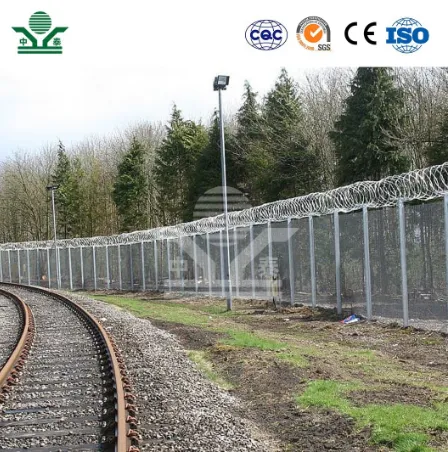The Versatile Applications of Grating Mesh
Grating mesh, often referred to as grating, is a structural element used across various industries due to its unique properties and versatile applications. This material, characterized by its grid-like pattern, is essentially a combination of bars or plates that provide support and allow for the passage of air, light, and other elements. Its wide range of functionalities makes grating mesh an essential component in several sectors, including construction, agriculture, transportation, and manufacturing.
One of the most significant advantages of grating mesh is its strength-to-weight ratio. Constructed from materials such as steel, aluminum, or fiberglass reinforced plastic, grating mesh combines high load-bearing capacity with lightweight properties. This means that it can support significant weights without adding unnecessary bulk, making it an ideal choice for walkways, platforms, and stairways. In industrial settings, where heavy machinery is commonplace, grating mesh provides a safe and reliable surface that can withstand the rigors of daily operations.
In construction, grating mesh is often employed for flooring solutions. It allows for natural light to filter through while providing a safe walking surface. This is particularly advantageous in areas requiring ventilation, such as wastewater treatment plants or chemical plants, where the need for air circulation is critical. Moreover, grating mesh enhances safety by reducing slips and falls thanks to its textured surface.
The agricultural sector also benefits from the use of grating mesh, particularly in livestock farming. Raised grating allows for the easy passage of waste while keeping animals elevated, promoting hygiene and comfort. It prevents the accumulation of waste fluids, which can lead to diseases among livestock. Furthermore, grating mesh can be utilized in grain storage facilities, where airflow is necessary to preserve the quality of stored grains and prevent spoilage.
grating mesh

Transportation and infrastructure projects frequently incorporate grating mesh as well. For instance, pedestrian bridges, highway drainage grates, and railway platforms all utilize this versatile material. Grating provides a robust and durable structure that can withstand environmental pressures such as heavy rain or snow while allowing water to drain, preventing flooding and accumulating debris.
Manufacturers benefit from grating mesh in various ways. It is an excellent solution for creating operating platforms, assembly lines, and inspection stations. Its customizable nature means it can be tailored to fit specific dimensions and load requirements, ensuring maximum efficiency in the production process. Additionally, grating mesh is easy to clean and maintain, which is a vital consideration in any manufacturing environment.
Furthermore, the aesthetic appeal of grating mesh cannot be overlooked. Available in various finishes and colors, it can enhance the visual aspect of a space while providing functionality. This has made it a popular choice for architectural features and urban landscapes, blending safety with style.
In conclusion, grating mesh is a multifunctional material that serves a myriad of purposes across different sectors. Its strength, lightweight nature, safety features, and aesthetic flexibility make it an indispensable component in modern construction, agriculture, transportation, and manufacturing. As industries continue to evolve, the use of grating mesh will undoubtedly expand, contributing to innovations that enhance both functionality and design. Whether for industrial applications or decorative purposes, grating mesh proves to be a remarkable choice, worthy of consideration in any project.
-
Turn Down the Noise: The Future of Highway Sound Barriers
NewsApr.09,2025
-
Silence the Sound: The Power of Highway Noise Barriers
NewsApr.09,2025
-
Reduce Road Noise Effectively with Highway Noise Barriers
NewsApr.09,2025
-
Noise-Free Living: How Highway Barriers Make a Difference
NewsApr.09,2025
-
Engineered for Silence: Highway Noise Barriers for Every Road
NewsApr.09,2025
-
Effective Noise Control: Highway Barriers for a Quieter Tomorrow
NewsApr.09,2025
Subscribe now!
Stay up to date with the latest on Fry Steeland industry news.

